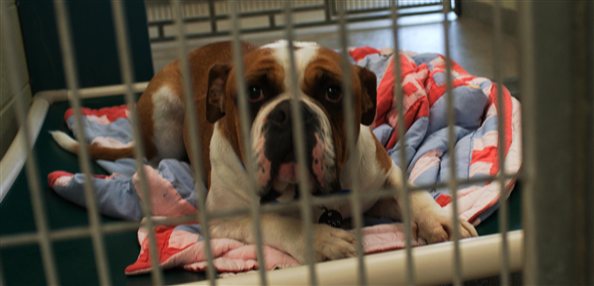Heartbreak and Hope: Working at a Shelter
Before coming to PETA, I worked at a small animal shelter in rural South Carolina, where I saw firsthand why it’s crucial for shelters to accept every animal in need instead of turning animals away, as most so-called “no-kill” shelters do.

One day, a man showed up with a carrier containing a mother cat and five kittens. They were bony, greasy, and crawling with fleas. “This is the best cat in the world,” the man said. “This is her 18th litter of kittens!” I had to practically bite off my tongue to avoid bluntly informing him of how badly he’d contributed to the animal overpopulation and homelessness crisis. Instead, I politely accepted the cats and told him we’d sterilize his animals for free if he got any more.
Another time, a woman walked up carrying an old flour bag and a fruit bag, both of which were knotted shut. The bags contained terrified, unsocialized cats. “These cats are taking over—you gotta take ’em,” she said. On another occasion, we were called out to pick up nine newborn puppies who were still nursing off their dead mother’s body under the house where their owners lived.
And I will never forget the day that a large, rough-looking man raced up in an old truck with an elderly dog in the back. I met him outside with a give-up form, waiting to hear his excuse. Instead, I got a rare glimpse of kindness: The dog wasn’t his. He’d found her looking ill by some train tracks, carried her to his truck, and sped to the shelter for help.
An examination revealed that she was suffering badly, possibly from congestive heart failure, and I explained that the best I could give her was a peaceful passing. The man agreed and insisted on staying while I wrapped the dog in a towel, carried her gently to an exam table, kissed her head, and gave her a lethal injection to end her suffering. If not for him, this poor angel would have surely died slowly and in agony.
Whenever I hear “no-kill” propaganda, I think of all the animals we helped at that open-admission shelter. Turning them away would have meant their suffering and certain, painful deaths, and caging them indefinitely is never a humane option. Some are too broken, too old, or just plain unwanted and will not be adopted. Euthanasia was and remains a mercy for many animals, although it breaks the hearts of those who choose to provide this kindness. What gives me hope is that spaying and neutering can drastically reduce the number of animals who end up homeless. Please, if you haven’t already, have your animals sterilized as soon as possible—and urge everyone you know to do so as well.
Written by Teresa Chagrin, PETA’s animal care & control specialist
